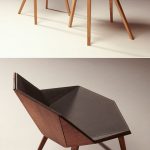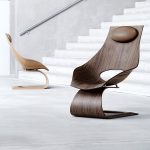Chairs have been a staple of human furniture since ancient times, serving as a basic tool for sitting and resting. However, the design and functionality of chairs have evolved significantly over the centuries, reflecting changes in technology, materials, and cultural preferences.
In ancient Egypt, chairs were typically reserved for royalty and people of high status. These chairs were often made of materials like ebony and ivory, and were decorated with intricate carvings and gold embellishments. The design of these chairs was intended to symbolize power and prestige, with high backs and ornate details.
In ancient Greece and Rome, the design of chairs became more practical and utilitarian. The klismos chair, for example, featured a curved backrest and splayed legs, providing both comfort and stability. These chairs were often made of wood or bronze, and were used in both domestic settings and public spaces like theaters and amphitheaters.
During the Middle Ages in Europe, chairs were scarce and considered luxury items, reserved for the nobility and clergy. The design of chairs during this period was heavily influenced by Gothic architecture, featuring intricate carvings and ornate details. Chairs were often large and imposing, reflecting the hierarchical structure of medieval society.
The Renaissance period saw a revival of classical design principles, with chairs becoming more refined and elegant. The design of chairs during this time featured graceful curves, intricate inlays, and luxurious fabrics. Renaissance chairs were often used as status symbols, with elaborate designs that showcased the wealth and sophistication of their owners.
The Industrial Revolution in the 18th and 19th centuries brought significant advancements in chair design and production. Mass production techniques allowed for chairs to be manufactured more efficiently and affordably, making them more accessible to a wider range of people. The design of chairs during this period became more standardized and functional, with a focus on comfort and ergonomics.
In the 20th century, modernism and industrial design principles revolutionized chair design once again. Designers like Charles and Ray Eames, Marcel Breuer, and Arne Jacobsen pioneered new materials and construction techniques, creating iconic chairs that are still celebrated for their innovative design and timeless appeal. These chairs were often made of materials like molded plywood, tubular steel, and plastic, showcasing the possibilities of modern technology and manufacturing processes.
Today, chair design continues to evolve with advancements in materials, technology, and sustainability. Designers are experimenting with new materials like carbon fiber and bio-based plastics, as well as incorporating technology like adjustable height and lumbar support to improve comfort and functionality. The design of chairs is also becoming more sustainable, with a focus on using recycled materials and reducing waste in the production process.
From the ornate thrones of ancient Egypt to the sleek, minimalist designs of modern furniture studios, the evolution of chair design reflects the changing needs, preferences, and values of societies throughout history. As designers continue to push the boundaries of innovation and creativity, who knows what the future holds for the humble chair? Only time will tell.
 decorafit.com Design ideas for your home and patio
decorafit.com Design ideas for your home and patio
















